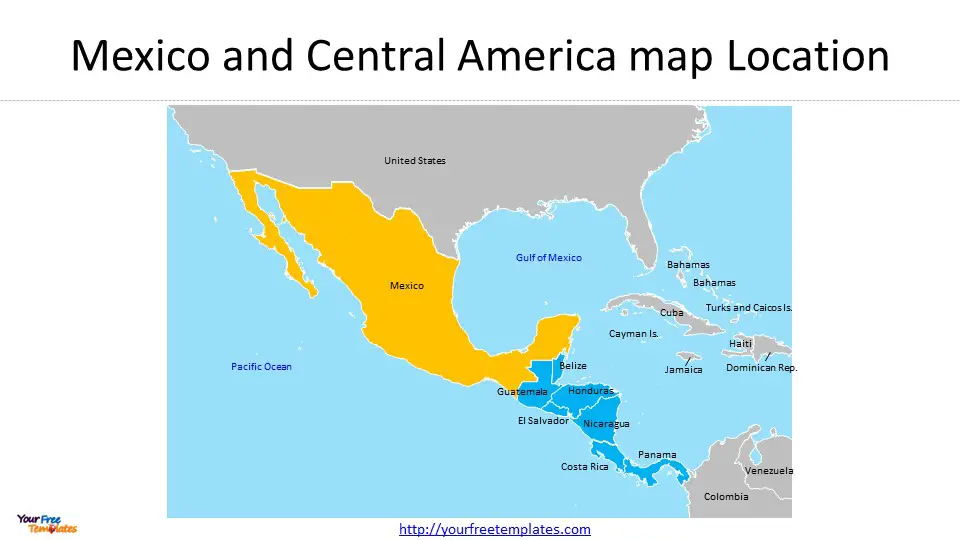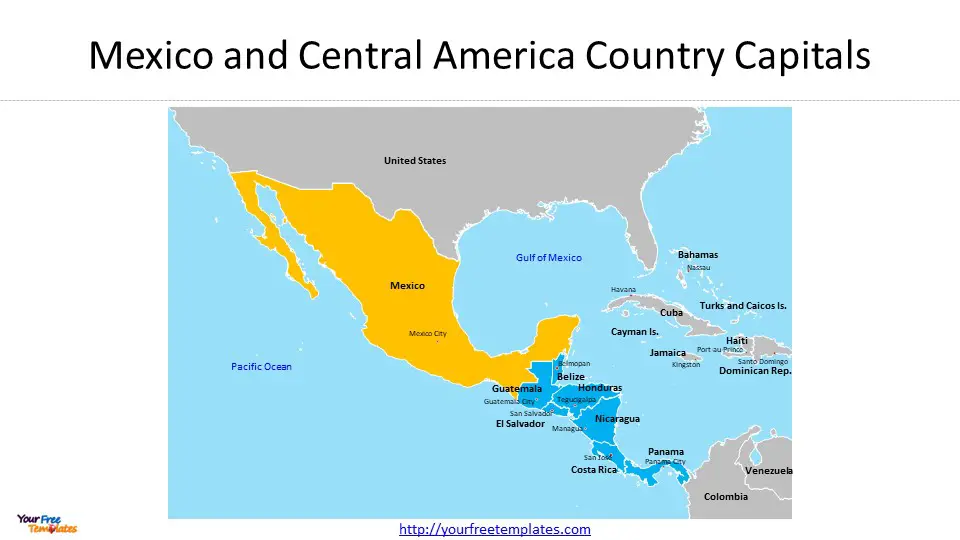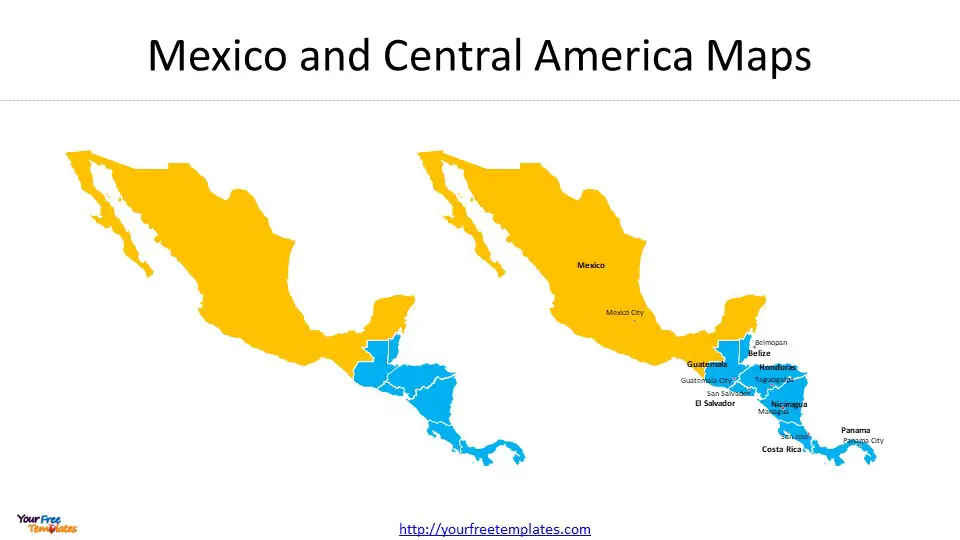The map of Mexico and Central America template in PowerPoint format includes three slides. Firstly, we have the Mexico and Central America map template with neighboring countries. Secondly, we present Mexico and Central America map with their capitals labeled. In the end it is Mexico and Central America map template for the 8 countries only. As the same diagram PowerPoint template series, you can also find our Latin America, Caribbean, Central America PowerPoint templates.
A Comprehensive Understanding of Mexico and Central America
From the azure waters of the Caribbean Sea to the verdant tropical landscapes, Mexico and Central America are regions of remarkable diversity and rich cultural history. This article delves into the multifaceted aspects of these regions, highlighting their geographical uniqueness, historical significance, and current socio-economic dynamics.
Geographical Overview
Lying between North America and South America, Mexico and Central America form a vast isthmus that separates the Pacific Ocean and the Caribbean Sea. This region is home to seven tropical nations, which include Panama, Belize, Costa Rica, El Salvador, Guatemala, Honduras, and Nicaragua, each unique in its cultural identity and natural beauty.
The map of Mexico and Central America provides a clear visual representation of these countries and their geographical relationships. This region’s narrowest point is just about 30 miles wide, and nowhere in Central America is more than 125 miles away from the sea, highlighting its maritime significance.
In terms of physical geography, Central America is characterized by mountainous terrains, dense rainforests, fertile valleys, and coastal plains. The region is also known for its active volcanoes and frequent seismic activities.
Slide 1, Map of Mexico and Central America Location

Rich Biodiversity
Central America and Mexico are hotspots of biodiversity. These regions are known for their diverse ecosystems, ranging from mangrove forests along the coasts to the rainforests in the interiors. The Yucatan Peninsula in Mexico is particularly famous for the Great Mesoamerican Reef, one of the world’s largest coral systems. The region’s biodiversity is further enriched by its abundant bird and insect species, as well as a variety of mammals and reptiles.
Despite the threats of deforestation and climate change, conservation efforts are underway to protect these diverse ecosystems. In particular, the strengthening of indigenous and community land rights has proven effective in reducing deforestation and preserving biodiversity.
Historical Significance
Mexico and Central America are regions steeped in history, with roots tracing back to ancient Mayan and Aztec civilizations. The ruins of these once-mighty empires, hidden amidst lush jungles, offer intriguing insights into the region’s past. These historical sites, coupled with vibrant cultural festivals, keep the tradition alive in these regions.
Socio-Economic Landscape
In recent years, Mexico and Central America have witnessed significant socio-economic transformations. Despite facing challenges such as violence, displacement, and natural disasters, these regions have shown remarkable resilience.
In Central America, millions of people face food insecurity and violence, leading to humanitarian and protection needs. However, international aid, particularly from the EU, has been instrumental in providing essential services and livelihood to the vulnerable population.
Mexico, on the other hand, has made considerable strides in securing indigenous and community land rights, promoting sustainable forest management, and reducing climate change impacts.
Slide 2, Mexico and Central America Map with Capitals

Cultural Diversity
Central America and Mexico are melting pots of diverse cultures. Spanish is the dominant language, with many indigenous languages also spoken throughout the region. Religion plays a significant role, with Roman Catholicism being the most widely practiced faith.
The ethnic composition of these regions is equally diverse, with a majority of the population being of mixed European and indigenous descent. There are also significant communities of African, Asian, and European descent.
Economic Prospects
In terms of economy, Central America and Mexico have traditionally relied on agriculture, particularly coffee and banana production. However, in recent years, there has been a shift towards manufacturing and service sectors.
Tourism is another significant contributor to the economy, especially in Belize, Guatemala, and Costa Rica. The region’s natural beauty, coupled with its rich cultural heritage, makes it a popular destination for tourists worldwide.
Current Challenges and Future Prospects
While Mexico and Central America have made significant strides, they still face numerous challenges. Violence, displacement, and natural disasters continue to affect millions of people, particularly in Central America.
Moreover, economic disparities persist, with wealth distribution remaining skewed. Limited mineral and energy resources and the restricted size of the market pose challenges for manufacturing.
Despite these challenges, the future looks promising. Efforts are underway to diversify the economy, expand non-traditional exports, and establish free-trade zones. Moreover, the strengthening of community land rights and forest management policies offers hope for sustainable development and climate change mitigation.
Slide 3, Map of Mexico and Central America

Conclusion
In conclusion, Mexico and Central America are regions of remarkable diversity and resilience. Despite the challenges they face, these regions continue to evolve and adapt, offering a unique blend of natural beauty, rich history, and vibrant cultures.
For other interesting maps, pls visit our ofomaps.com
Size:428K
Type: PPTX
Aspect Ratio: Standard 4:3
Click the blue button to download the maps.
Download the 4:3 Template
Aspect Ratio: Widescreen 16:9
Click the green button to download the maps.
Download the 16:9 Template














